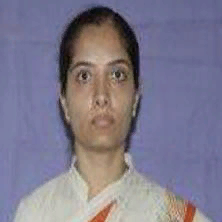
Komal R. Borisagar
Work place: EC Department, Atmiya Institute of Technology & Science, Rajkot, India
E-mail:
Website:
Research Interests: Speech Synthesis, Speech Recognition, Image Processing, Image Manipulation, Image Compression
Biography
Dr. Komal R. Borisagar received B.E. degree in Electronics and Communication from C. U. Shah Engineering College, Saurashtra University, Rajkot, Gujarat, India in 2002 and M.E. degree in Communication System Engineering from Changa Institute of Technology, Gujarat University, Ahmedabad, Gujarat, India in 2008. In 2012, she received her doctoral degree from the Department of Electronics and Communication Engineering, JJT University, Rajasthan, India. She has 10 year of teaching experience. She is working as Assistant Professor at Electronics & Communication Department, Atmiya Institute of Technology and Science, Rajkot. Her areas of interest are wireless communication, speech processing and signal & image processing.
Author Articles
Compressive Sensing Based Multiple Watermarking Technique for Biometric Template Protection
By Rohit M. Thanki Komal R. Borisagar
DOI: https://doi.org/10.5815/ijigsp.2015.01.07, Pub. Date: 8 Dec. 2014
Biometric authentication system is having several security issues. Two security issues are template protection at system database and at communication channel between system database and matcher subsystem of biometric system. In this paper, two level watermarking technique based on CS Theory framework in wavelet domain is proposed for security and authentication of biometric template at these two vulnerable points. In the proposed technique, generate sparse measurement information of fingerprint and iris biometric template using CS theory framework. This sparse measurement information is used as secure watermark information which is embedding into a face image of same individual for generation of multimodal biometric template. Sparse watermark information is computed using Discrete Wavelet transform (DWT) and random seed. The proposed watermarking technique not only provide protection to biometric templates, it also gives computational security against spoofing attack because of it is difficult for imposter to get three secure biometric template information where two encoded biometric template is embed in term of sparse measurement information into third biometric template. Similarity value between original watermark image and reconstructed watermark image is the measuring factor for identification and authentication. The experimental results show that the technique is robust against various attacks.
[...] Read more.Other Articles
Subscribe to receive issue release notifications and newsletters from MECS Press journals